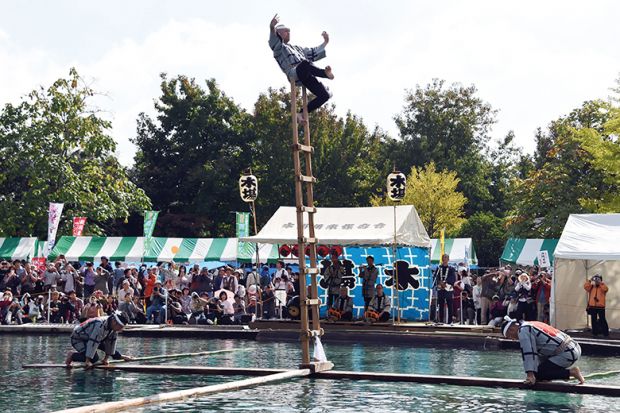Japan’s private universities could find themselves in a tight spot as Tokyo seeks to increase the proportion of science students in higher education from 35 to 50 per cent over the next decade, scholars say.
Plans released this autumn by Japan’s Cabinet Office asked institutions to produce more science majors even as the country’s population declines. The move is intended to help Japan respond to industry’s critical skills needs and tackle large-scale societal issues, such as climate change.
But academics said that although well intended, the plans would put a greater financial burden on the private institutions that make up 80 per cent of the country’s higher education sector. These universities currently focus primarily on social science and humanities subjects, and it is often more expensive to teach the sciences.
“There are growing expectations for innovations that can significantly transform society, and universities are expected to contribute,” said Akiko Morozumi, a professor of higher education at the University of Tokyo.
Nevertheless, she said, the government’s aims would prove “extremely difficult” to achieve for cash-strapped private institutions.
Professor Morozumi noted that the government was discussing the possibility of sharing full-time faculty members with other universities and designing flexible educational programmes across universities, increasing STEM offerings via collaboration – something private institutions have been doing to meet a demand for data science graduates.
“I expect that many universities will partially respond to these policies without increasing costs,” she said. Private universities receive few government subsidies and are unlikely to be able to raise tuition fees amid existing student shortages and an ongoing recession.
Akiyoshi Yonezawa, vice-director of the international strategy office at Tohoku University, was confident that public institutions – where graduates predominantly major in STEM courses already – would be able to adapt to the government’s plan, as would top private universities.
But meeting that aim was a “quite different story” for less wealthy, private universities under pressure from population decline, he said.
While humanities and social sciences instruction is not resource-intensive, natural science courses often require laboratory work, including materials and supervision, which makes the proposition “very expensive”.
Professor Yonezawa suggested that a “realistic option” might be for these institutions to weave STEM offerings into their other courses, following in the vein of a “more interdisciplinary, liberal arts type of education”.
But not everyone is positive that such an approach would amount to a true increase of science education.
“I wonder whether such a programme can be called a proper STEM programme. Wouldn’t it be a quasi-STEM programme?” asked Hiroshi Ota, director of the Centre for General Education at Hitotsubashi University.
Other academics were less convinced that creating more natural sciences majors would translate to an influx of needed skills.
“Personally speaking, increasing Japan’s portion of STEM graduates is not that important,” said Junko Hibiya, former president of the International Christian University, a private institution located on the outskirts of Tokyo.
Instead, she argued in favour of developing critical skills across disciplines. “What we do need to emphasise is that all students take more STEM courses seriously during their undergraduate years,” she said.

